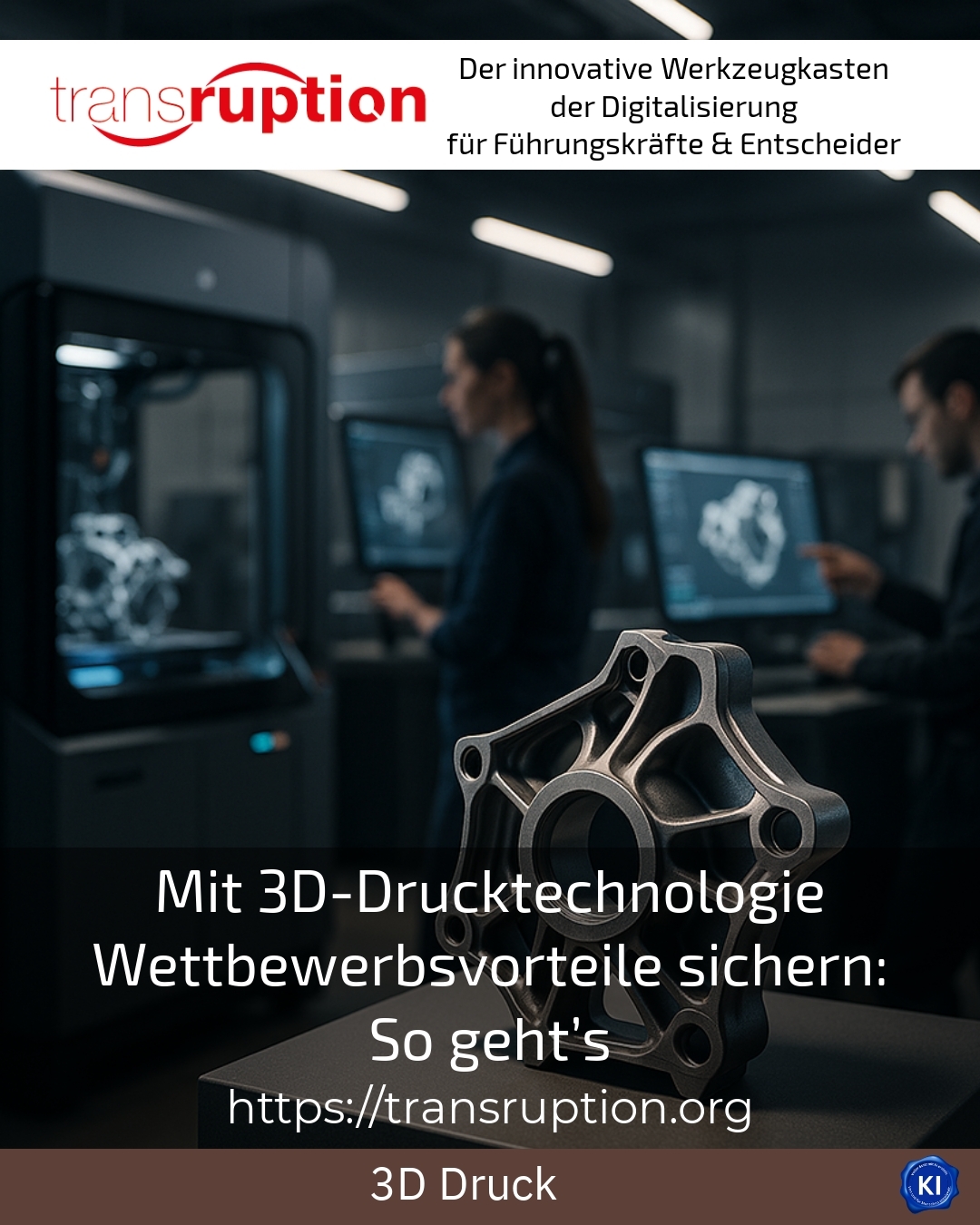The integration of 3D printing technology offers numerous opportunities to be successful in highly competitive markets. The ability to manufacture complex components efficiently and flexibly opens up a wide range of possibilities for companies to increase their innovative strength and optimise their production processes. 3D printing technology therefore not only supports the rapid development of prototypes, but also the cost-effective production of small batches and customised products.
How 3D printing technology complements traditional production processes
Many companies rely on outsourcing for production. This often results in cost savings, but also higher risks due to long supply chains and international transport costs. This is where 3D printing technology creates a decisive advantage: it makes it possible to simplify production and logistics by allowing parts to be manufactured directly on site.
This advantage is already frequently utilised in the automotive industry. Spare parts can be printed on demand and without the need for large stocks. This allows manufacturers to reduce unnecessary stock and storage costs, which can account for up to 20 % of surplus inventory. This shortens delivery times and increases flexibility in customer service.
Small and medium-sized companies also benefit from additive manufacturing. Moulds for production can be created quickly, which significantly shortens the development time for new products. Additive manufacturing avoids the effort and costs involved in the production of injection moulds and makes small series economically feasible.
In medical technology, 3D printing technology enables the production of customised prostheses and precisely fitting implants. This ensures a better fit and improves patients' chances of recovery. Individualised models of surgical sites support surgeons in complex procedures through precise planning.
Practical examples from various industries
BEST PRACTICE at the customer (name hidden due to NDA contract) A car manufacturer was able to use 3D printing technology to produce spare parts for older models directly in the factory. This significantly shortened delivery times and noticeably reduced warehousing costs. Operational flexibility increased measurably.
BEST PRACTICE at the customer (name hidden due to NDA contract) In a medium-sized mechanical engineering company, tools and production aids were manufactured in-house using 3D printing. This reduced dependency on suppliers, accelerated production processes and supported rapid adaptation to changing requirements.
BEST PRACTICE at the customer (name hidden due to NDA contract) A manufacturer of customised medical aids used 3D printing to quickly adapt to patient-specific requirements. This led to higher customer satisfaction and a competitive advantage thanks to the customised product range.
Sustainability and efficiency: two major advantages of 3D printing technology
Additive manufacturing conserves resources. Unlike conventional subtractive manufacturing, this technology only uses the material that is actually needed. Excess material is often recycled and reprocessed. This significantly reduces waste.
At the same time, decentralised production with 3D printing helps to reduce transport routes. This reduces emissions and has less impact on the environment. This creates significant ecological benefits, particularly in globally networked supply chains.
The savings in material costs and logistics are often reflected in improved profitability. Companies can make their production processes leaner and more flexible by using 3D printing technology.
Application examples for efficient and sustainable production
Components manufactured using 3D printing are used in the aviation industry and are considerably lighter. This saves fuel and reduces the CO2 emissions of aeroplanes.
A manufacturer of household appliances uses 3D printing to produce spare parts only on demand. This reduces storage costs and avoids overproduction.
Additive manufacturing is also being used in the fashion industry to create innovative accessories and customised individual items that can also be produced in a resource-saving manner.
More flexibility through digital process design
3D printing technology makes it possible to develop designs digitally, change them quickly and produce new versions with little additional effort. This digital flexibility supports agile development processes in which products are constantly optimised.
Rapid prototyping allows companies to react quickly and cost-effectively to customer feedback. Instead of lengthy mould production, market-ready products are created within a few weeks.
Small series and individual customer requests in particular can be efficiently fulfilled using 3D printing technology. This allows companies to set themselves apart from the competition.
Specific examples of digital flexibility
A consumer electronics manufacturer can quickly customise and test prototypes for new devices. This significantly shortens the time to market.
In the furniture industry, digital models are used to try out variations of product designs and produce them directly in small batches.
A sporting goods manufacturer develops customised equipment for athletes that can be adapted to specific requirements using 3D printing.
My analysis
3D printing technology offers companies a wide range of opportunities to secure a lasting competitive position. The combination of flexibility, cost savings and sustainability makes additive manufacturing a valuable addition to traditional production. In particular, the ability to quickly implement individual and customised solutions can be a decisive competitive advantage.
Companies that actively integrate this technology into their processes strengthen their innovative power and are better able to respond to changing market requirements. Transruption coaching accompanies this development and supports companies in making the best possible use of the potential of 3D printing technology for specific projects.
Further links from the text above:
6 underestimated benefits of 3D printing for your supply chain
Advantages of 3D printing for small businesses
What advantages does a 3D printing project have for my company
For more information and if you have any questions, please contact Contact us or read more blog posts on the topic TRANSRUPTION here.
















